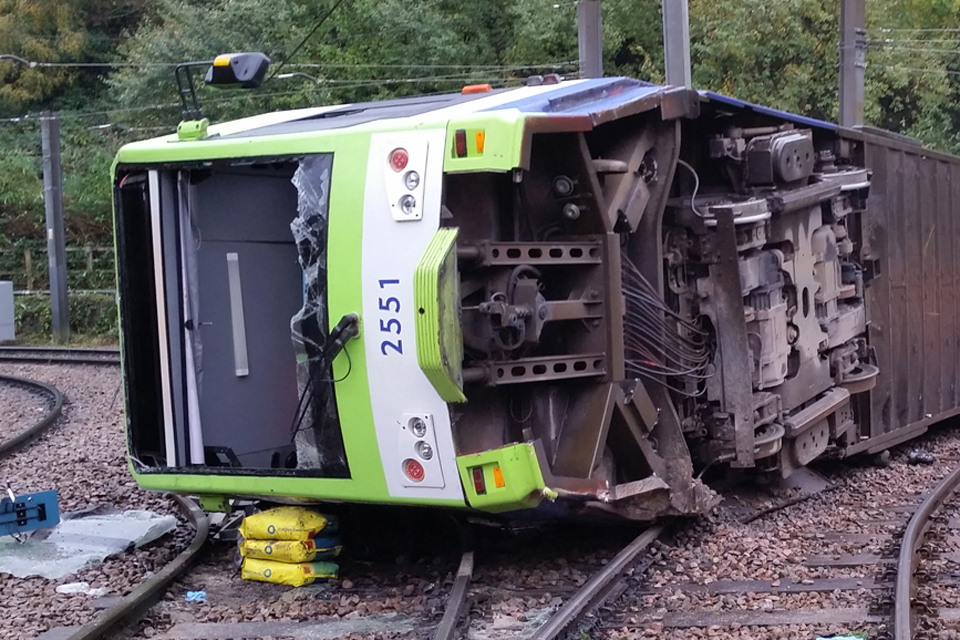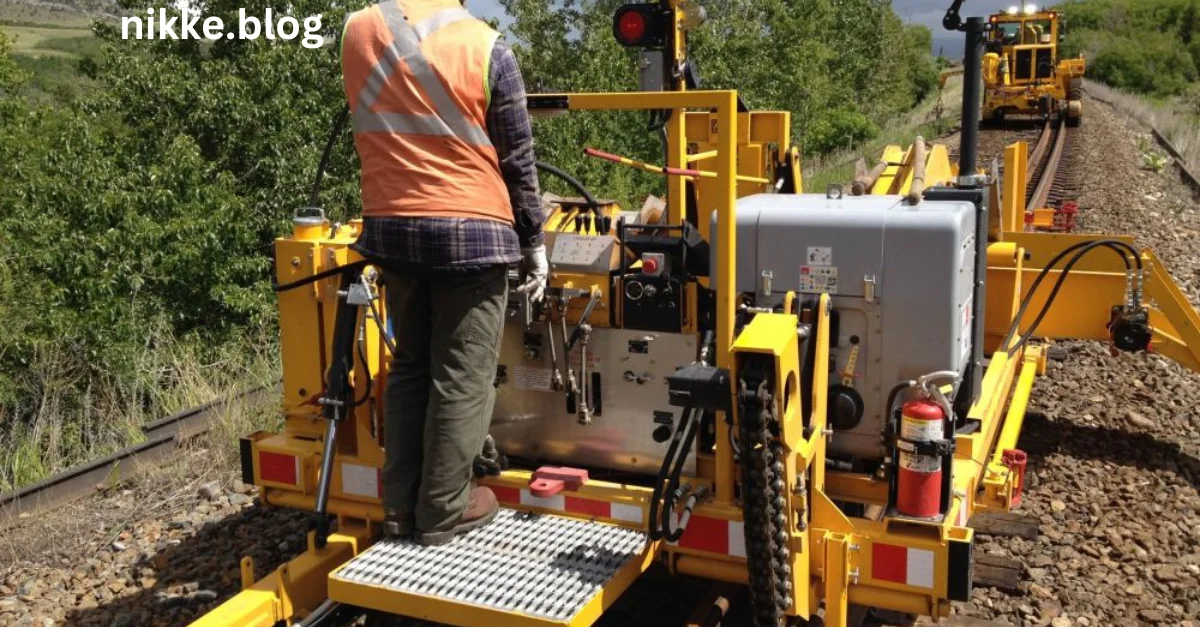Railway safety always remains a major concern and every single part that is a part of the track system is involved in ensuring the safe running of trains. However, it is often forgotten that another very important component is the tie plate or the base plate. It establishes and holds the rails in their correct position though is fixed between the rail and wooden or concrete rail road Sleepers. Originally, tie plates have been associated with a problem referred to as ‘tie plate slip derailment’, which affects track stability and can result in derailments, in the worst case scenario. In this article we will discuss more about tie plate slip derailment, its role in causing derailments and how the risk factor could be avoided to lessen its impact on rail operations.
What is a tie plate slip derailment?
Tie plate slip derailment is a process in which the tie plate moves from its respective position on the railroads tie. In most conditions, the tie plate is suppose to stay fixed between the rail and the tie and also help keep the rail in the right alignment and support the track structure. This movement can lead to destabilisation of the rail with alignment thus potentially resulting to a likely hood of irregularities and derailments.
Causes of Tie Plate Slip
Several factors can contribute to tie plate slip derailment:
- Heavy Train Loads: Because of the continuous force from heavy train traffic, tie plates are known to gradually move in that direction as the ties compound age.
- Environmental Factors: Track components are also impaired by environmental extremities such as heat and cold as well as excessive rainfall. For instance, high temperature may expand the rails while water may corrode the wooden joint on the tie and hence it will not provide a good anchorage for the hold of the tie plates.
- Track Vibrations: Frequent train movement and high-speed rail lead to rail vibrations that result in deformation or fatigue of the track fasteners.
- Inadequate Fastening Mechanisms: Inadequate fixity either of spikes or bolts that hold the tie plate may afford the tie inadequate hold, and so make the plate shift out of place.
- Wear and Tear of Wooden Ties: Wooden ties rather deteriorate with time, and when this happens they are incapable of holding the tie plate firm.
It is for this reason that tie plate slip derailment usually develops slowly and may hardly be noticeable during inspections. There was the potential though to cause track conditions that are very risky if not tightly controlled.
How Tie Plate Slip Derailment Leads to Derailment
The slip that occurs at the tie plate can actually cause derailments if there are misalignments along the rail. Here’s how it happens:
Rail Instability and Misalignment
When the tie plates slide, the rail may move back on the tie and it may not hold on to the tie satisfactorily. Synchron pressures can be misaligned due to such effects hence leading to rail buckling particularly when a large amount of load is being applied or when the temperature fluctuates wildly. A buckled track makes archaic track surfaces for train wheels to argue on thereby enhancing the reliability of derailment.
Inadequate gauge width
There’s also the gauge, which refers to the space between the two rails, and this shouldn’t vary on the track. In this case, however, should the tie plate slips, the rail may move outwards to change the gauge width. If gauge width is wrong then the train wheels will not run properly on the track and thus derailed particularly for high speed trains.
Reduced load distribution
Overtime, this results to the relationship between the rails breaking or cracking, and therefore destabilizing the track and increasing the likely hood of a derailment.
Fastener Loosening
As you will agree, with the movement of the tie plate, the holding spikes or bolts may also be affected as well. These fasteners when loosened will cause the rail to become unstable, thus adding to the movement of tie plates. A chain of shifting components starts from here, making the track to become weaker and so on which leads to derailment.
Identifying Tie Plate Slip: Signs and Inspection Methods
Here are some signs and methods for identifying the issue:
Track Geometry Measurement
This investigation expedited could suggest tie plate slip derailment as the cause of such irregularities.
Whether it is Spiking or Fastener Integrity
Erratically appearing sharp protrusions around a tie plate suggest that the plate may be moving. Evaluations of the structural stability of these fasteners can also offer clues of plate movement, a sign that these regular checks are useful to detect.
Tie Condition Assessment
Other aspects that the inspectors should ensure include checking on wooden ties to as to whether they have rotten or not. Defects such as splits, cracks, or rot mean that the tie may not be holding the plate securely and, therefore, makes a tie plate slip derailment.
Measures to Avoid Slip and Derailment of Tie Plates
Maintenance personnel on the railways can follow some measures to reduce tie plate slip derailment and derailment risks.
Strengthening Fasteners
There are various types of fastening systems that are more effective than traditional fastening and include elastic rail clips or screw spikes that would offer larger resistance to vibrations as well as to pressure of carrying large loads. They apply more pressure than regular spikes in order that it becomes very difficult for the tie plates to move off.
Loosening of Worn or Decayed Ties
Use of higher strength or concrete relations instead of old and badly deteriorated wooden ties goes ahead in diminishing tie plate slip derailment. These ranks are more elongated and better in withstanding the effects of weather hence providing more stability of tie plates.
Applying Anti-Slip Coatings
This additional layer enhances the reduction in the mobility of tie plates particularly in circumstances with higher vibrations.
Geometric Tests on Routine Maintenance of Regular Track
Regular manual measurements made using track geometry vehicles whenever maintenance personnel take trains on the tracks for other purposes especially with inspections are very helpful in detecting changes characteristic of slips of tie plates faster. This is important because periodic track geometry inspections reveal the issues in advance before getting out of hand.
Track Stiffness Management
Regular maintenance plays a major role in testing variability of the track stiffness and reducing tie plate slip derailment. Other measures which h1elp to prevent conditions, which influence tie plate movement, are also the changing ballast and ensuring proper drainage around the track.
New Technologies for Assessing Slip at Tie Plate
New technologies have presented various techniques for track condition assessment which can be of great importance in assessing slips at tie plates and related problems. Some of these technological advancements include:
Real-Time Monitoring Sensors
These types of sensors give constant information about the state of tracks and allow for an instant reaction to certain problems.
Drones for Visual Inspections
In this way, the inspectors can observe much length of rail track in a shorter duration, observing any movement of tie plates or any other abnormality which is visible.
Machine learning algorithms
Machine learning algorithms applied to the track geometry data will aid in finding out the characteristics of slips in tie plates.
Automobiles That Detect Track Defects
Special track inspection car equipped with appropriate sensors and imaging can provide accurate track geometry, gauge and tie plate arrangement of track on daily basis. This technology eliminates or minimizes the possibility of manual inspections and increases the reliability of data.
Case Studies of Tie Plate Slip and Derailment
Several real-world examples underscore the importance of addressing tie plate slip derailment:
Amtrak Derailment in Washington State (2017)
Some of the studies carried out unearthed track related complications as a result of the findings. This case clearly proved that for knowing such incidents, we need to maintain integrity of tracks.
London Underground Accident (2020)

It is important to note that in 2020, a train in the London Underground had a derailment result of which track misalignment was the cause. Although not associated with tie plate slip derailment, the event highlighted how misalignment as small as gauge could contribute to derailment threat in heavily trafficked areas.
Conclusion:
Tie plate slip is an essential parameter in the railway line; failure to control the parameters may lead to derailment. This is actually a very important aspect in as far as the rail integrity, the stability of these rails and safe train movement are concerned. The changes that will occur in railways, involve preventive measures and responsive maintenance; thus, rail networks will continue its operations providing safety to passengers and cargo as well as the surrounding communities.
















Leave a Reply